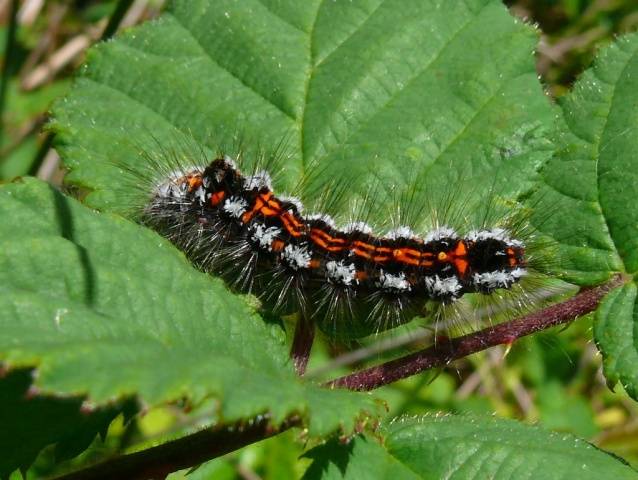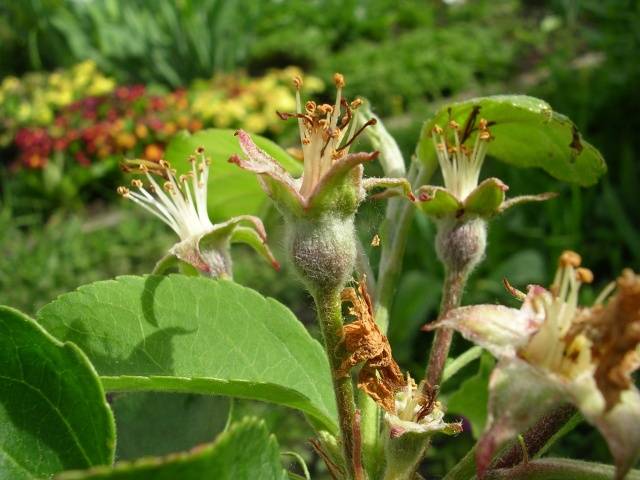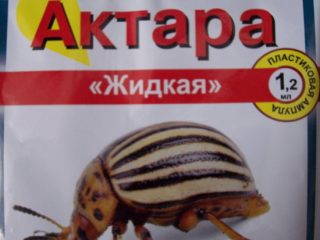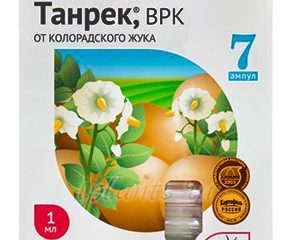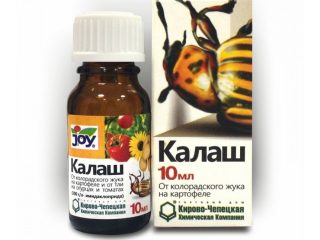Content
Modern varieties of fruit crops may have good immunity to one or more diseases, or be resistant to a certain type of pest - breeders have been achieving this effect for years. But unfortunately, there are still no trees or shrubs that would never get sick and would not be of interest to insect pests. Pest and disease control is an important part of the care that is vital for an orchard. A gardener can conscientiously prune his trees, fertilize and water the soil, but this will not protect the garden from a small pest or infection that can bring all a person’s efforts to naught in a matter of days.
Descriptions and photos of the most dangerous pests of fruit trees are given in this article. Here we will talk about the most common diseases of fruit trees and shrubs, and effective methods of combating them.
Causes of death of orchards
The goal of a good gardener is a well-kept, healthy garden that produces stable yields of tasty fruit. Unfortunately, not only people like fragrant fruits - various insects also love them.There are also pests that eat only leaves, buds, or feast exclusively on tree bark. There are also those who devour everything that comes their way.
In addition to the main reason, there are also indirect ones that can aggravate the condition of fruit trees:
- External damage to wood. Bark eaten by rodents, improperly pruned shoots, branches broken by the wind - all this causes a weakened tree, which, in turn, is easy prey for pests and diseases.
- Temperature damage which may arise due to exposure of the garden to too high or critically low temperatures. Temperature changes are especially dangerous: sudden warming in winter, hail and sudden cooling of the air in mid-summer, cool and humid night air combined with daytime heat.
- Lack or excess of moisture. Every gardener knows the strong dependence of plants on the amount of water they receive. At the same time, both excessive rainfall or watering and periods of prolonged drought are equally dangerous for the tree.
- Nutritional imbalance. Everyone knows that cultivated plants need to be fed with organic and mineral fertilizers. If the amount of fertilizer is calculated incorrectly, the plant will definitely react to this: the shade of the leaves will change, they may curl or become stained, the shoots will turn red or turn brown, and the appearance of the fruits will become unattractive.
Types of insects
Anyone who believes that it is the harvest of an orchard that needs to be saved from pests is mistaken. Yes, insects are often attracted to juicy and aromatic fruits ripening on tree branches. But Absolutely any part of the plant (from foliage to roots) can become food for some types of these pests.
It is customary to divide fruit pests into groups depending on their “culinary” preferences:
- fruit pests – those who are interested exclusively in the fruits of the tree. Among them there are those that eat the pulp of the fruit (for example, the sawfly), but there are also those that are interested in the seeds (weevils). The caterpillars of many butterflies are very dangerous for the orchard, since at this stage of their development they are omnivores and can quickly cause irreparable damage to the crop.
- Foliar pests I am interested in the green part of plants - leaves. Destroying leaves impairs photosynthesis, causing any plant to die. In this group there are insects that leave holes in the leaves, and there are also pests that roll the leaf blade into a tube or destroy it entirely.
- Bark parasites They use this part of the tree to satisfy their own hunger (ticks, bark beetles). And most of all existing pests penetrate into cracks in the bark and hide there from the winter cold.
- Root pests probably the most dangerous of all, because they are not visible, and for a long time the gardener may not realize that the tree is in danger of imminent death.The main representatives of this group are weevils and beetle larvae. A tree with damaged roots dies very quickly, and it is almost impossible to save it.
- Omnivorous pests - a real pestilence for the orchard. For example, aphids are able to drink sap from any part of the plant, so a large number of this parasite is certain death for the tree.
To become better acquainted with dangerous pests of an orchard, you should study their photos and descriptions, learn about the habits of these insects and what means can be used to combat them.
Caterpillars
Caterpillars are big fans of fruit and berry plants, because their main food is succulent foliage. The caterpillar can leave holes in the leaf blade or eat it completely.
Caterpillars begin their life journey at the very beginning of spring. At this time, pests are just waking up and are small in size, so it is still easy to fight them. There are several ways to destroy caterpillars on fruit trees:
- spray the tree with chlorophos or karbofos (40 grams per 8 liters of water);
- use captan or phthalan for processing (40 grams per 7 liters of water);
- any mineral oil will simultaneously protect the tree from ticks;
- removal and cutting of pest nests;
- destruction of clutches (effective for silkworms);
- cutting out affected branches;
- treatment of bark with kerosene.
Larvae
These pests are good because they are clearly visible on the shoots of fruit plants.You can eliminate the larvae mechanically - just collect them by hand. The larva looks like a yellowish or dark gray ring covered with transparent mucus. The larvae leave holes and translucent traces of dried mucus on the leaves of the tree.
If the number of larvae on a tree is large, this is very dangerous - the pests will quickly destroy all the leaves and disrupt the photosynthesis of the plant. Therefore, in such cases, you should not hesitate and be careful - only a strong chemical will help. Among biological products, you can try Entobacterin, which is safe even at the stage of fruit ripening.
Weevils
A weevil can be distinguished from another beetle by the presence of a long trunk, which is an extension of its head. Thanks to this powerful trunk, the pest can feed on delicate leaves, juicy fruits, and hard bones or tree bark.
The first wave of weevils appears by mid-April and is busy eating the buds. The presence of these pests can be guessed by the transparent drops near the tree buds. If you open such a bud, a cavity will be found inside - the pest has destroyed the future leaf.
You can destroy bud weevils with a solution of chlorophos (20 grams per bucket of water). If a gardener is against “chemistry,” you need to remember that weevils are ordinary beetles that do not stick well to branches. It is effective to shake off pests using physical force. Before the procedure, it is recommended to spread a cloth or film around the tree, and then collect the beetles and throw them into salt water.
Medyanitsa (psyllids)
Copper bugs are very unpleasant pests, capable of jumping and flying over considerable distances. Psyllids feed on the juice of leaves and fruits. You can recognize their presence by the characteristic sugar marks on all parts of the tree. A fruit damaged by copperhead is covered with a transparent film; subsequently, a fungus develops on the peel and the rotting process is activated.
You can fight this pest using a solution of nitrafen - 350 grams per bucket of water. When spraying before flowering, you can add karbofos. A week after flowering, fumigating the shoots of the fruit tree can help.
Aphid
You can learn about aphid damage to stone fruit crops in early spring. To do this, already in March, the owner needs to go out into the garden and look for ants on the trees: it is these insects that are most interested in aphids.
When the aphid has multiplied, it is quite easy to see it: the tree or its individual parts are covered with sticky small cobwebs, the leaves curl, and the shoots are stunted in growth. At this stage, a stronger drug will be required; you can use Thiacloprid or other “chemistry”.
Orchard diseases
Along with pests, gardeners are often plagued by diseases of the bark, roots, shoots and leaves of fruit trees, so their treatment is one of the main tasks of a professional.Unfortunately, there are as many different diseases that threaten fruit trees as there are pests. All of them manifest themselves differently, and they should be treated with special methods.
Apple tree cancer
You can find out that a tree has cancer by the following characteristic signs:
- the bark on individual shoots has shrunk and cracked into concentric rings;
- in winter, a red growth appeared on the bark;
- the damaged branch became darker than the others.
The tree needs to be treated radically: diseased branches are cut out, wounds are treated with garden putty.
Bacterial cancer
This disease affects only stone fruit crops. First, spots with light edges appear on the leaves. Later stages of bacterial canker are characterized by the appearance of gum that oozes through the bark. Diseased branches gradually die off.
To cure a tree, you need to cut out all damaged areas and treat the ulcers with garden varnish. For prevention, you can spray the garden with a copper preparation in August, September and October.
Withering buds
This disease appears when spring is too wet. The flower clusters of apple, pear and plum trees become brown and begin to dry out. To prevent the spread of the disease, you need to radically remove all infected shoots and ovaries.
Brown rot
The fruits of fruit trees are primarily affected by this disease. Yellowish plaque rings appear on ripening fruits. Later, the entire fruit turns brown and becomes soft until it completely rots.
To prevent the disease from spreading, you need to pick the infected fruits and collect them from the ground near the tree.
Bacterial burn
The shoots and leaves of a diseased plant become brown and gradually dry out. In early spring, a translucent liquid begins to ooze from the infected parts. If a case of bacterial burn is noticed in the garden, it is urgent to prune the diseased shoot 60 cm below the lesion.
Conclusion
Pests and diseases of fruit trees are a constant headache for gardeners. Experienced owners know that treating plants is very difficult and not easy; it is much more correct to carry out prevention and follow care recommendations. Pests and diseases manifest themselves in different ways; before you treat your garden, you need to find out what exactly it is suffering from.





